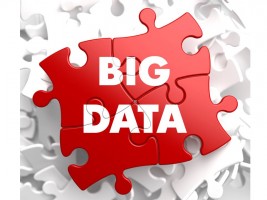Recreation: Poised for Big Data Analysis?
In the late 1990’s I got involved in a Canada-wide movement that collected evidence and research to document the benefits or outcomes delivered by recreation and parks.
Little did any of us know the field was ahead of its time in putting into place a precursor to what is now referred to as big data analytics. Let me explain.

The reality is that we create 2.5 quintillion bytes of data every day. What makes it even more challenging is that 90% of the data in the world today has been created in the last two years.
However, it is encouraging to know researchers are focused on mining and analyzing this big data. As a result of their efforts, we can now allocate police resources by predicting where and when crimes are most likely to occur, determine traits such as the resistance to specific diseases, predict where terrorists will attack, and yes, identify which products will be of greatest interest to each of us. Netflix even mined its subscriber data to put the essential ingredients together for its recent hit, House of Cards.
Whereas since the late 90’s the field of recreation has been mining academic research and grey literature, the big data being mined these days comes from a variety of sources - social media sites; computers tracking stock trades and bank deposits; digital pictures and videos; purchase transaction records; and even cell phone GPS signals.
Big data analytics refers to the process of collecting, organizing, and analyzing large sets of data (called big data) to discover patterns and other useful information. Its sort of like collecting the dots so we can connect the dots.
Think of it as data about data. In some ways it is not all that different from pulling all the pieces of a puzzle together so the big picture becomes clearer.
While data-driven intelligence has been used successfully in technical and business endeavors, the community sector has often lagged behind. Recently efforts have been focused on how to make better use of big data for social problems.
While the field of recreation and parks via the Leisure Information Network and the Benefits Hub have continued to collect the data, we need to do more.
While the initial data mining carried out by the field of recreation focused on evidence and research to document the benefits or outcomes delivered by recreation and parks that is now being used to generate better performance and accountability measures and to illustrate their essential role in both social and community development, there is much greater potential. We will be better positioned to predict how active living is reducing health care costs, how youth involved in recreation and sport are developing leadership skills, and how communities are able to build resilience as the result of coming together for festivals and events. We will have a better handle on the facilities and programs we should (or shouldn’t be offering) and even the number of recreation programs needed in colleges and universities to meet future job demands.
The field of recreation and parks is extraordinarily valuable to our individual, community, and environmental wellbeing, and big data analysis can make it even more so as it will provide the evidence and direction for the best use of our resources.
Posted on 07-27-15Next entry: The Critical Hours
Previous entry: When Economy Trumps Quality of Life We Pay a Price

 Brenda Herchmer is the owner of Grassroots Enterprises, a community development consulting company.
Brenda Herchmer is the owner of Grassroots Enterprises, a community development consulting company.